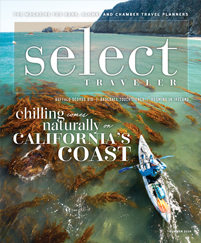Shanghai
Beijing is China’s capital, but Shanghai is the country’s financial hub. And with more than 24 million residents, it is the largest municipality not only in China but also in the world.
The city is a concrete jungle of skyscrapers and a bustling jumble of people, but Shanghai is also a cultural mecca where visitors will find ancient treasures. The Shanghai Museum displays more than 120,000 works of art, including ancient Chinese bronze, jade, calligraphy, coins, ceramics and furniture. Many consider the building itself a work of art. Completed in 1996, the circular structure is studded with soaring arches and was inspired by the shape of an ancient bronze cooking vessel that’s now on display inside.
Famous skyscrapers such as the Jin Mao Tower, the Shanghai Tower and the Shanghai World Financial Center define the busy skyline of the Pudong district. But, topped by a spire above two spheres perched on a tripod-looking base, the Oriental Pearl Tower is by far the easiest silhouette to find. Travelers can visit the top of the building for city views, including one of the famous Bund district across the Huangpu River. The riverfront Bund district is one of the city’s most famous tourist attractions because it was once considered the financial center of the Far East. Dozens of historic buildings in just as many architectural styles — former banks and trading houses from around the world — line the riverbanks as a sort of living museum of architecture.
Inside the Jade Buddha Temple, which was built in 1928 to replace the 1882 temple that burned down, travelers will see the two Buddha statues carved entirely from white jade that a monk imported from Burma.
Montreal
Strolling on cobblestone streets past old stone buildings in Old Montreal, or Vieux Montréal, visitors can easily imagine themselves in the city 200 years ago and may even forget they’re not in France for a moment or two. The historic city center is the heart of Montreal and home to many of its must-see attractions.
At the Old Port of Montreal, shops, restaurants, bars and boutiques line the Promenade du Vieux-Port, which fronts the St. Lawrence River. Groups can also soar on zip lines, take Segway tours, climb 192 stairs to the top of the historic Clock Tower and relax on Clock Tower Beach below.
Notre-Dame Basilica de Montreal is one of the city’s jewels and a National Historic Site of Canada. The twin-tower church is a dramatic example of Gothic Revival architecture. And, although the exterior is gorgeous, the interior is breathtaking with bright blues, reds and golds that saturate the ceiling, the sanctuary and the panes of stained-glass windows, which depict scenes from the city’s religious history. Groups can arrange 60- and 90-minute guided tours and schedule an organ concert performed by Pierre Grandmaison, who has been an organist there since 1973. In addition to the concert, Grandmaison talks about his training, creative process and, of course, the instrument itself.
At the Montreal Botanical Gardens less than five miles away, groups can take guided tours of the themed outdoor gardens and 10 exhibition greenhouses, or opt for self-guided tours of the Biodome and its four ecosystems of the Americas, which include live animals. During a guided behind-the-scenes tour of the Biodome, visitors discover what it takes to maintain healthy ecosystems in a controlled environment and see water and air systems, the animal kitchen and reproduction basins. The gardens are adjacent to Olympic Park, site of the 1976 Summer Olympics — the Biodome is housed in the former velodrome — as well as the Insectarium de Montréal and the Planetarium Rio Tinto Alcan.
Havana
The doors to Cuba are cracked, but they haven’t exactly been flung wide open. After decades of embargoes on the small Communist country, the United States recently started allowing travel to Cuba, but only under strict rules. Ordinary tourism is still off limits. Individuals traveling to Cuba must do so on so-called “people to people” trips that focus on educational programs and require a schedule jam-packed with activities designed to create “meaningful interaction between the traveler and individuals in Cuba.”
Because travel to Cuba must focus on person-to-person exchanges, visiting the Caribbean island still requires a deft touch and is best done with an experienced travel operator. A cruise with an established company that provides those educational opportunities and schedules those social interactions is one of the best ways to not only get to the island but also experience its rich culture.
Havana is both Cuba’s capital and its largest city, with more than 2 million residents. During a “History of Havana” presentation, visitors will learn about the city’s Spanish origins, its republican period and its current Communist regime. A “Real Taste of Havana” tour showcases the island’s culinary culture, a mix of Spanish cuisines and Caribbean influences. Visitors can sample classic Cuban dishes, such as moros y cristianos, rice cooked in black beans; crispy snacks like malanga fritters and yuca fingers; and hearty, home-cooked comfort food such as ropa vieja.
As part of their cultural immersion, groups can take in a performance of the Cuban National Ballet or another show or concert at the Gran Teatro de La Habana, which dates to the 1830s. Groups can also stroll the streets to soak up Havana’s renowned nightlife or enjoy a scheduled people-to-people performance of Afro-Cuban music.
www.cubatravel.tur.cu









